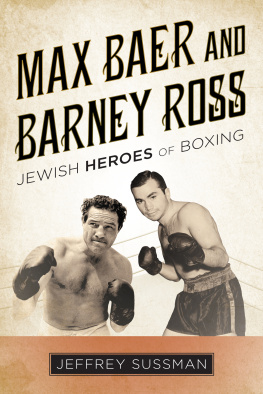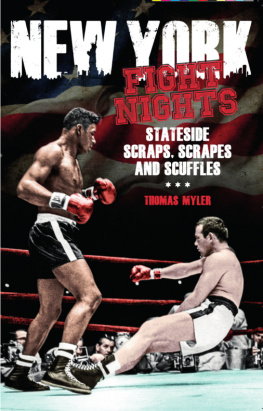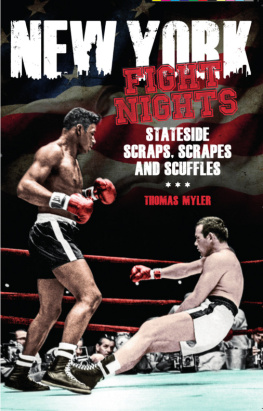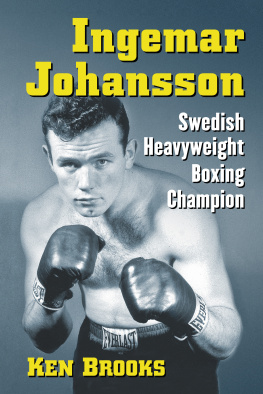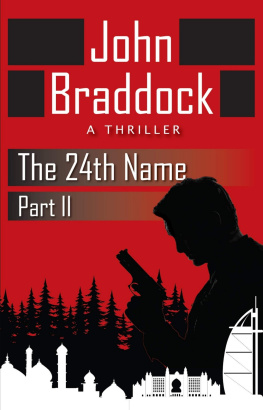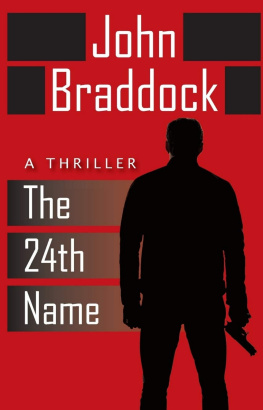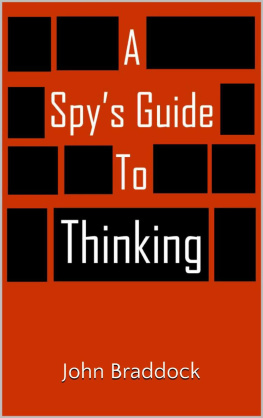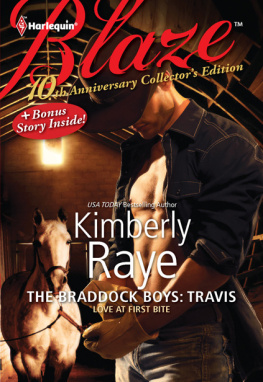Copyright 2005 by Jeremy Schaap
All rights reserved
For information about permission to reproduce selections from this book, write to Permissions, Houghton Mifflin Harcourt Publishing Company, 215 Park Avenue South, New York, New York 10003.
www.hmhco.com
The Library of Congress has catalogued the print edition as follows:
Schaap, Jeremy.
Cinderella Man : James J. Braddock, Max Baer, and the
greatest upset in boxing history / Jeremy Schaap.
p. cm.
Includes bibliographical references and index.
ISBN 0-618-55117-4
1. Braddock, James J., 1906 2. Baer, Max, 19091959. 3. Boxers (Sports)United StatesBiography. 4. Sports rivalriesUnited States. I. Title.
GV1131.S36 2005 796.83'092dc22
[B] 2004066085
e ISBN 978-0-547-52583-9
v2.0614
For my father,
who wrote thirty-three
booksall of them
inspirations
Preface
In 1932, the song Brother, Can You Spare a Dime? achieved a unique distinction: it was a number-one hit for two crooners, Rudy Vallee and Bing Crosby. By capturing the despair of millions of Americans in the early years of the Depression, the song became a phenomenon. Harvey D. Gibson, the chairman of the Emergency Unemployment Relief Committee, said Brother, Can You Spare a Dime? typified the plight of many men who toiled and helped build this country and who today could not understand why, through no fault of their own, they were forced to ask for aid.
The songs message was universally understood. On December 31 in London, the announcer on a special New Years Eve radio broadcast said, Now we take you to New York. They will be celebrating their own New Year in about five hours, in an effort to bring back prosperity. Then the engineer flipped on Brother, Can You Spare a Dime?
In the 1920s, Yip Harburgs elegiac lyrics would have meant nothing to most Americans, who were at the time drunk with prosperity. But by the mid-1930s, when families standing in soup lines had replaced flappers as the dominant cultural image, the song could have been the national anthem.
It floated through the air when James J. Braddock, fresh from the relief rolls, climbed through the ropes at the Madison Square Garden Bowl on June 13, 1935, to fight Max Baer. At odds of ten to one and higher, Braddock was the biggest underdog in heavyweight championship history. But when the ring announcer, Al Frazin, introduced himThe challenger, from Jersey City, New Jersey, weighing in at one hundred ninety-one and three-quarters pounds, James J. Braddock!Braddock was engulfed in applause. Millions of Americans cheered for him that night, not because he was the betting underdog, not because the champion was unpopular, and not because Braddock was particularly exciting to watch, but because he personified their own struggles. Like so many of them, he had been humbled by forces beyond his control. Like so many of them, he had been devastated by a system that he assumed was stable. Like so many of them, he had been forced to ask for help. The decline in his personal fortunes mirrored the national collapse, perhaps more than that of any other American. Just before the crash, he had been one of the best young fighters in the worldeverything was within his grasp. And then, when it hit, he tumbled from contender to tomato can to longshoreman to welfare recipient. His time was the Great Depression and he was a man of his time, Red Smith wrote.
Only a boxer could have made the impact Braddock made, because in Braddocks time, boxing was the countrys most popular sport and boxers were its most popular athletes. Little boys wanted to grow up to be boxers and plastered scrapbooks with images from the Ring, and their fathers spent what little disposable income they had to watch fights in cramped, smoky neighborhood arenas and enormous outdoor stadiums. Millions of people paid twenty-five cents to watch the fights they hadnt seen in person at the moviehouse. They went there too to watch enormously popular films in which the leading man played a boxer, such as Golden Boy, with William Holden, The Champ, with Wallace Beery, and The Prizefighter and the Lady, with Max Baer.
In 1935, the year Braddock fought Baer for the world heavyweight title, the New York Yankees played most of their games in an almost empty stadium; their average home attendance was 8,885 fans. But that fall, nearly 100,000 people crowded into Yankee Stadium to see Baer fight Joe Louis in a nontitle bout. In June, more than 60,000 fans saw Louis fight Primo Carnera in a nontitle fight at Yankee Stadium. And that May, more than 40,000 people attended the Barney Ross-Jimmy McLarnin lightweight championship fight at the Polo Grounds. Baseball may have been the national pastime, but boxing was the national passion.
Much of the sports appeal was rooted in its ethnic and racial rivalries, which were exploited by promoters and relished by fans, many of whom were immigrants or first-generation Americans. The Irish versus the Jews. The Jews versus the Italians. The Italians versus the blacks. The blacks versus the Poles. The Germans versus all of them. Fighters changed their names to OBrien or Goldstein to create ethnic matchups that would make their fights draw bigger crowds. And at a time when the heavyweight champion of the world mattered in a way in which no athlete now matters, Americans of all hues and ethnicities found inspiration in the story of a man who rose, in the words of his first biographer, from relief to royalty.
Damon Runyon, who knew a fairy tale when he saw one, dubbed Braddock the Cinderella Man. At that time, to climb to the top of the heavyweight division was to ascend to the highest peak in sports, both in popularity and financially.
On September 22, 1927, for thirty minutes workplus nine minutes of catching his breath between roundsGene Tunney made $990,445 in his second fight against Jack Dempsey, more money than Babe Ruth had made in his fourteen major league seasons to that point. Eight years later, in 1935, in the midst of the Depression, the highest-paid player in the major leagues was Lou Gehrig, the Yankees first baseman. The Iron Horse made $40,000, a significant sum to the average American but little more than pocket change for Max Baer, Max Schmeling, and the other preeminent boxers of the era. That fall, when Baer fought Louis, he earned $215,000, more than five times Gehrigs annual salary.
In the days of Max Baer and James J. Braddock, in a sports landscape lacking international basketball stars, soccer stars, and Formula One race-car drivers, the heavyweight champion wasnt just the best-paid or the most significant athlete in the world; he waswith the possible exception of a few world leaders, such as Stalin and King George Vthe most famous person on the planet.
Jack Johnsons impact on popular feeling was sharper than William H. Tafts, John Lardner wrote in White Hopes and Other Tigers. Jack Dempsey overshadowed Calvin Coolidge. Taft and Coolidge accepted the situation meekly. In fact, after meeting President Coolidge, who enthusiastically shook his hand, Luis Angel Firpo, an Argentine heavyweight contendernot even a championturned to a bystander and said, Who was that man?
There were times, of course, when the heavyweight champion was trumped by presidents, kings, and field marshalsspecifically, when the world was at war. But most of the time, the champ was king.
Someone, though, was needed to blow the champions horn. In his later years, Dempsey, who was champion from 1919 to 1926, said, I was a pretty good fighter. But it was the writers who made me great. Dempsey knew that the golden age of sport was an invention of the golden age of sports writing.
In the 1920s and 1930s, radio was in its infancy and television was a rumor. The vast majority of Americans got their informationabout politics, sports, and entertainmentfrom newspapers. In New York City alone there were nearly two dozen thriving dailiesthe
Next page

